How to Lay Turf

5 December 2023
How to Lay Turf: A Step-by-Step Guide
We are so excited to be included in your new lawn adventure! Our expert advice will arm you with all the tips and necessary tools to get an exceptional-looking lawn. This easy-to-follow step-by-step guide will show you just how to do it!
Step 1: Choose a suitable grass type
Turf is the smartest investment you can make for your home; there are so many more benefits than just adding value to your property. It creates a beautiful, soft, and safe place to play with the kids or pets; it has a natural cooling effect and benefits the environment by converting carbon dioxide to oxygen even more efficiently than trees.
Consider the following traits when picking your new lawn:
- Sun & Shade
- Salt-affected Environments
- Drought Tolerance
- Wear and Tear
- Cost and Maintenance (mowing & fertilising)
- Look and Feel
Reach out to our friendly staff if you require assistance with choosing the perfect instant turf, like buffalo grass for your area!
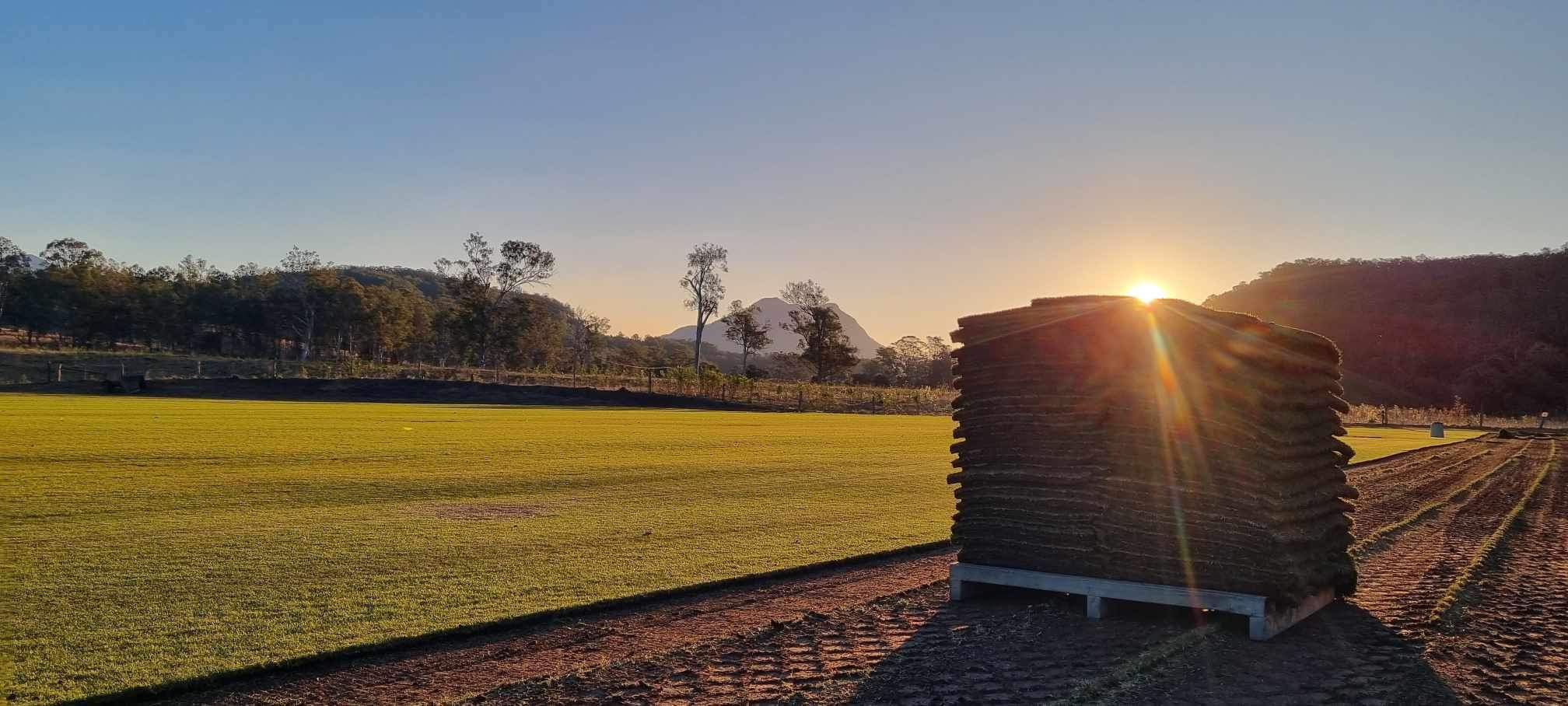
Step 2: Check your turf underlay soil
Perform a pH test on your soil using a pH testing kit. This will help guide you with what treatments your soil may require before installing your new turf on existing grass. We’d like to see your pH between 5.5 and 7.
TIPS:
- If you have a clay base, we’d recommend applying a clay breaker product like Gypsum to help de-compact the heavy clay soil and add a sandy soil under-turf.
- If you already have a sandy base, mixing in some organic matter will help boost your base’s nutrients.
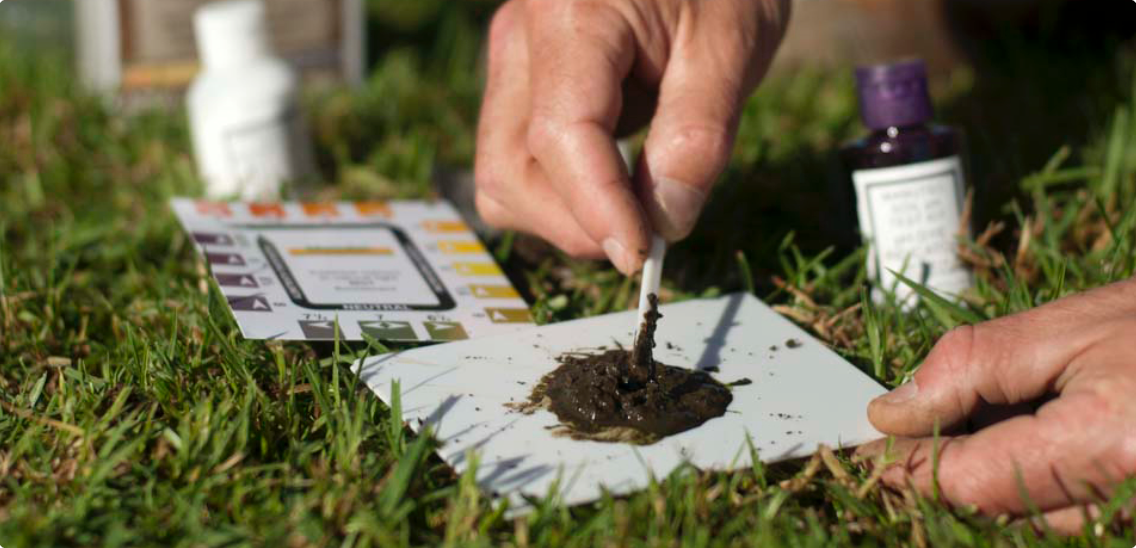
Step 3: Measuring and calculating how much turf you need
Measuring the square metre of your turf can be super easy! Break up your yard into geometric shapes, then add all of these shapes together to find your square meterage.
TIPS:
- It is best to always use a consistent set of units, with millimetres and metres being the best.
- Always double-check your measurements, and get a family member or friend to check them too!
- After you have found your total m2, add 5% to the total to allow for cutting around odd shapes and objects.
- You can use a tape measure, a surveyor’s long tape, or a measuring wheel.
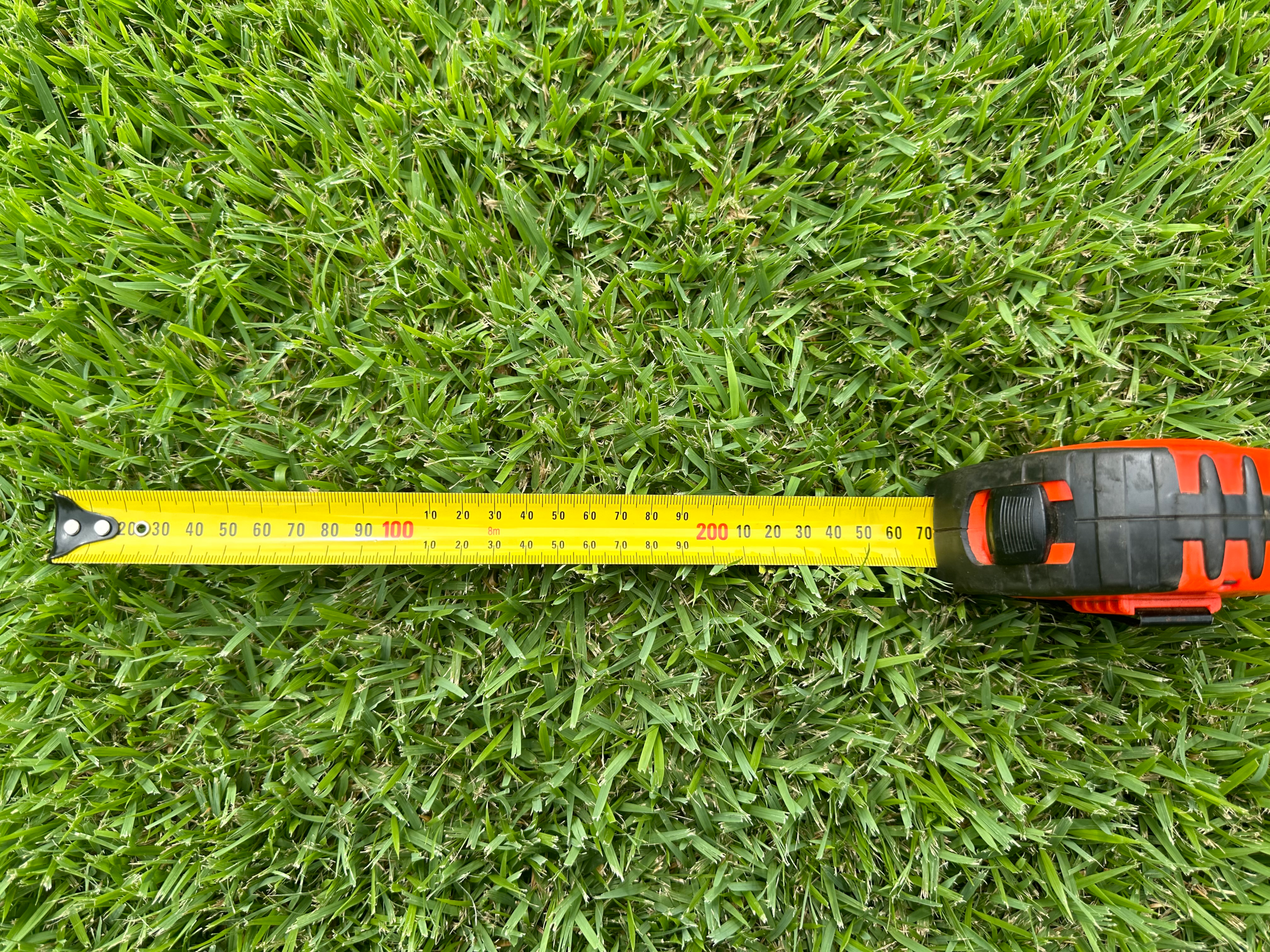
Step 4: Getting the perfect soil preparation
- To start the preparation of your soil, spray out any existing vegetation with glyphosate. Please ensure to follow the labelled rates to allow for a total kill. Allow a minimum of two days for the chemical to work on the plant. A second application may be required.
- Remove any existing grass and weeds, or cultivate/rotary hoe this into the existing soil base.
- Add in any turf underlay required to make sure you have the best base for your new lawn. Always be sure to double-check your pH levels to ensure they are still within the appropriate range of 5.5 to 7.
- Eliminate any drainage problems by having the soil slope away from foundations, footpaths, garden beds, etc.
- Rake and smooth the soil, removing any rocks, roots, or large clods.
- Roll the area with a lawn roller; this will help firm the soil and reveal low areas that need more turf underlay soil.
- Keep the grade 20–25mm below sidewalks and driveways for the turf to sit into.
- Screen off the soil to provide a smooth surface, roll, and then screen again. Your soil needs to be compacted enough that when you walk on it you only leave a small footprint.
- Lightly wet the soil to minimise dust and provide a moist base for your turf, but not so wet that it turns to mud.
TIP:
- For best results, cultivate, till, or spade the area to a depth of approximately 150mm. This would be an ideal time to add in organic matter or soil amendments that may have been required from your earlier pH test.
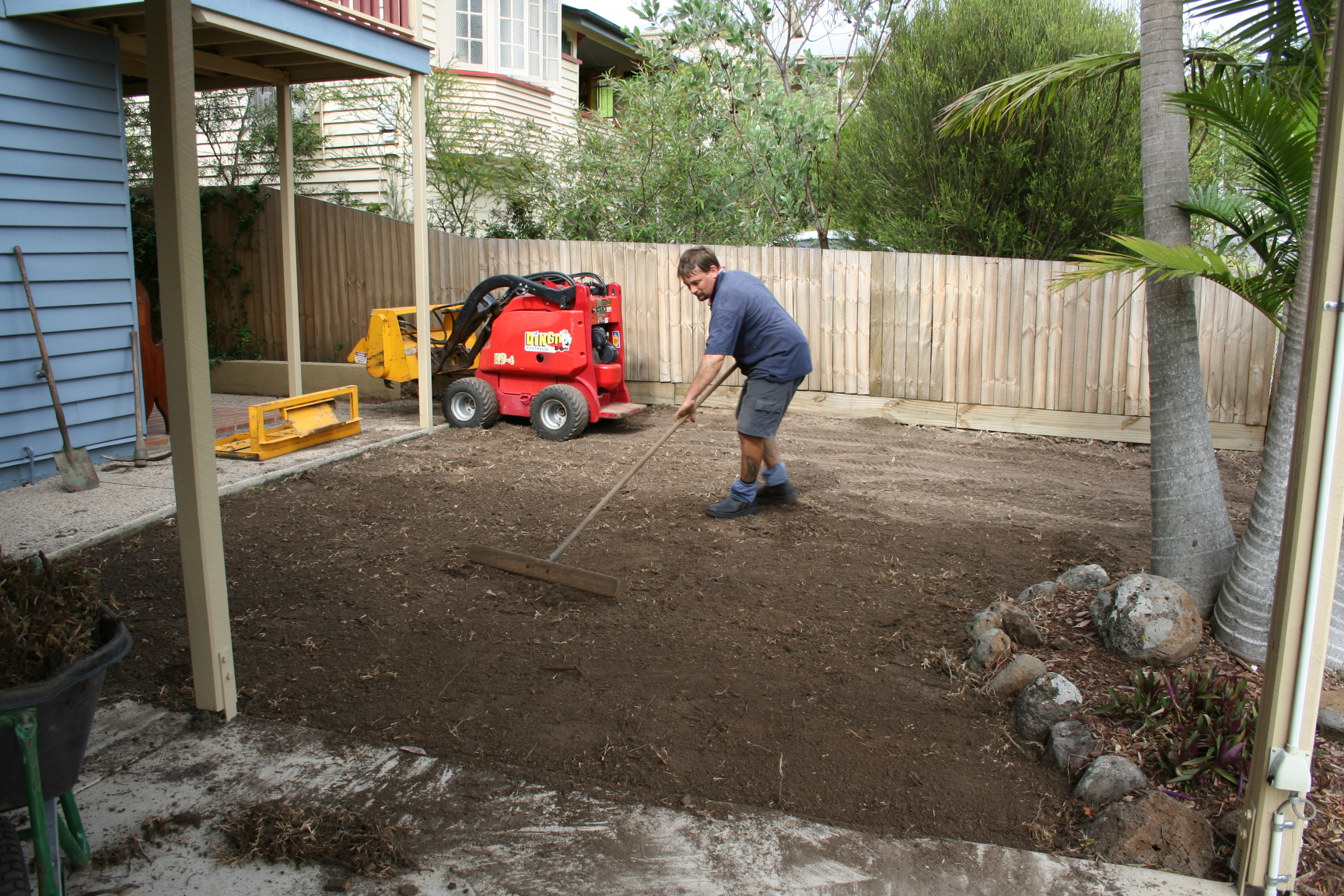
Step 5: Laying your fresh turf slabs
- Apply a lawn starter fertiliser such as Lawn Launcher which contains fast and slow-release fertiliser and water crystals. Rake this into the surface.
- Install your new lawn immediately upon turf delivery.
- Begin lawn installation at the furthest point and along the longest straight edge, such as a driveway or footpath. Stagger the joints in each row in a brickwork pattern, butting and pushing the turf edges against each other tightly. If laying on a slope, lay across the slope for best results.
- Use a large, sharp knife, garden shears, or a sharp spade to cut turf or trim around trees or edges.
- After you’ve finished laying your turf, roll the entire area; this will improve the contact between the turf and soil, remove air pockets, and help with levelling.
TIPS:
- Prior to laying turf, check that the soil is not too hot. Lightly wet the soil down to cool it off.
- If it’s a hot day, make sure you water each section as you lay to avoid the turf rolls drying out.
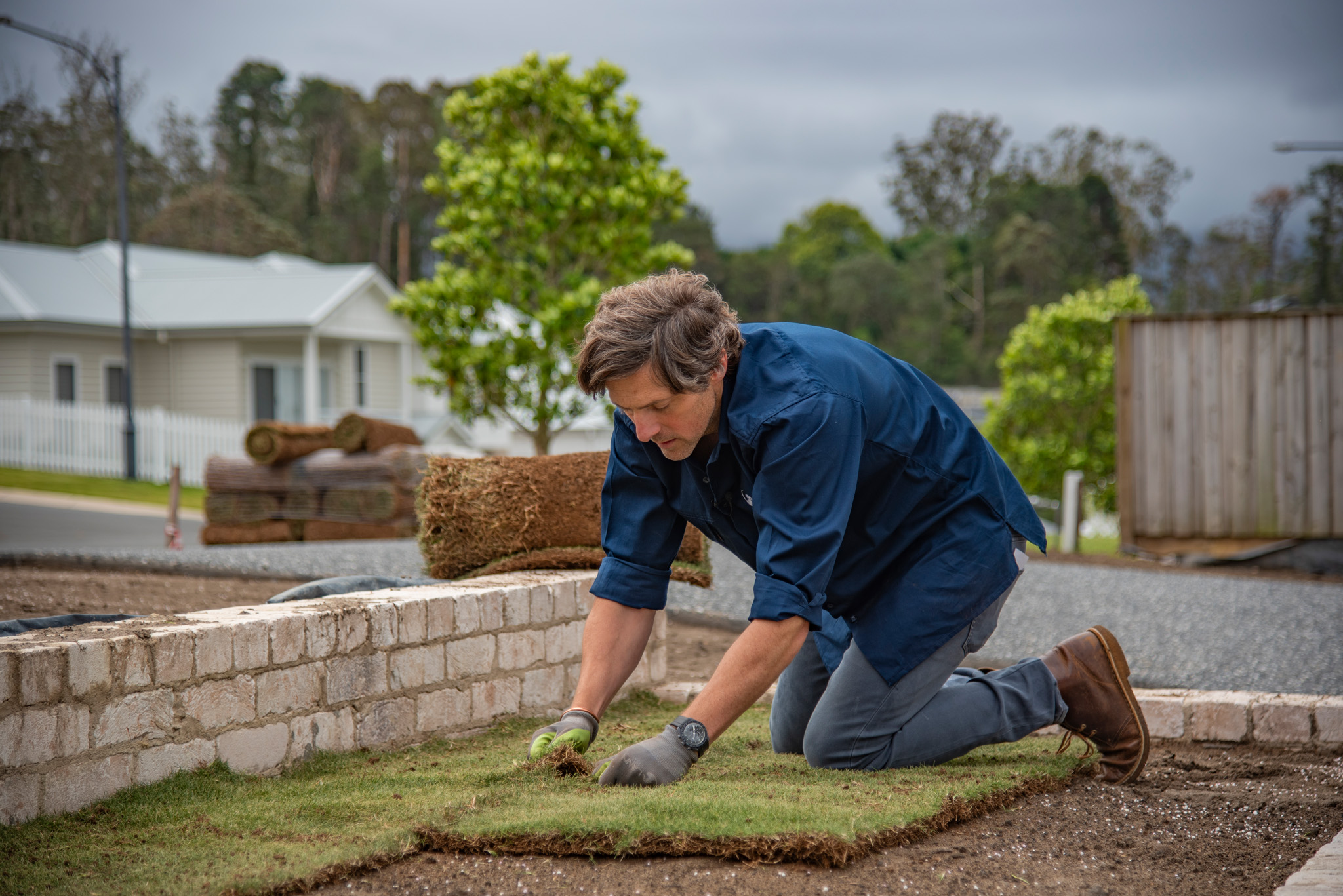
Step 6: Aftercare tips for the first 6 weeks
Days 1-7
- Watering twice daily in the morning and afternoon to the point of run off. In extreme heat conditions, you may need to water a third time to keep the leaf moist.
Days 7-14
- IF TURF PULLS UP – Watering twice daily, giving your new lawn a good soak.
- IF TURF WON’T PULL UP – Watering every morning.
After First Mow
- Watering once every 2nd day or as required preferably in the morning.
TIP:
- Whenever you finish a watering cycle, dunk a tea towel in water and hang it on the clothes line. Once the towel is dry, your lawn is ready for another drink.
The information provided above is a guide ONLY, please consider your current climate, weather conditions & temperatures when using this guide.
- During the first two to three weeks, avoid walking on your new lawn. This allows the root system to firmly knit with the underlay and ensures that the turf will remain smooth and free from lumps & bumps.
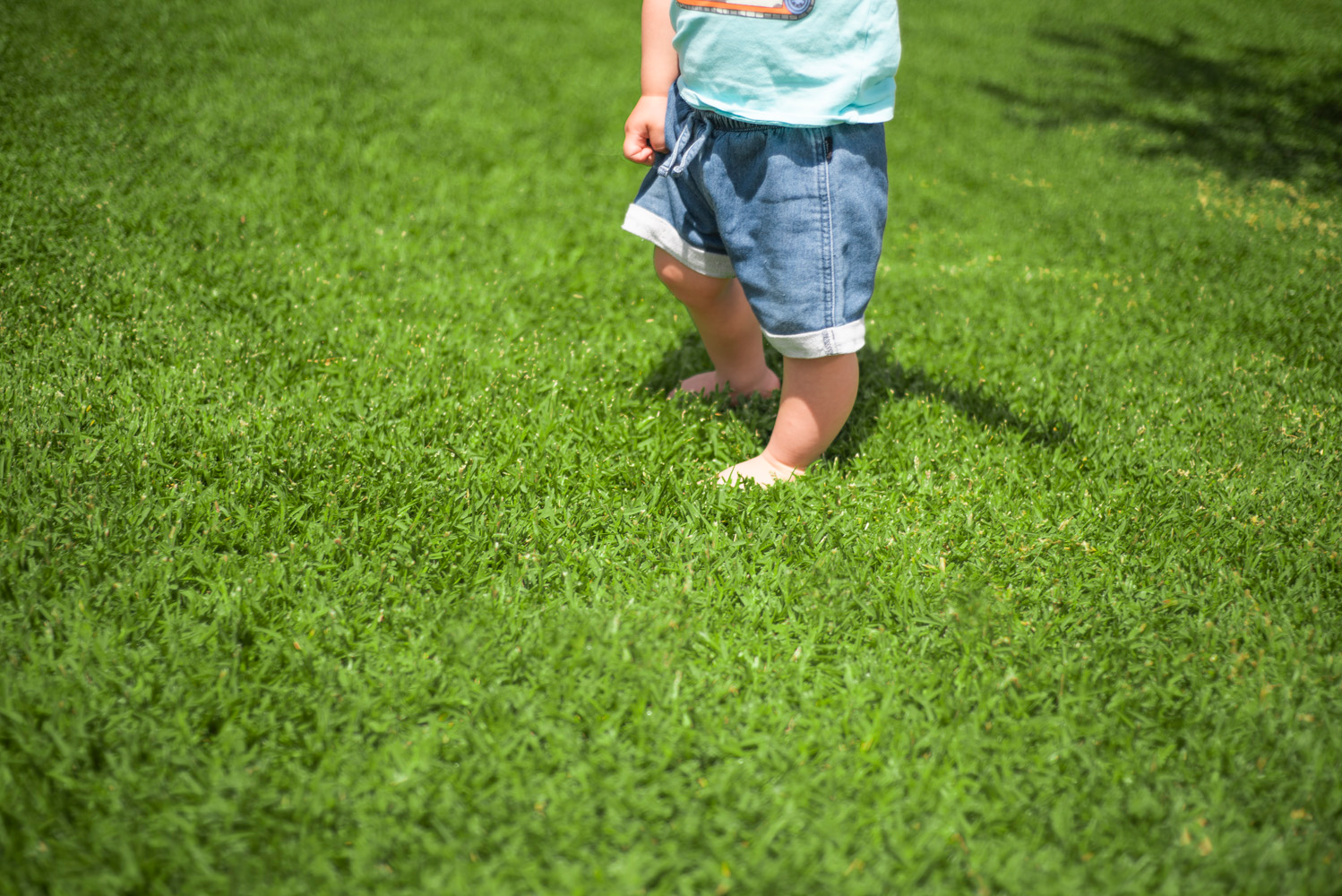
- Giving your lawn its first mow can be done once you can no longer lift any of the turf slabs. Depending on the turf varieties, this could be as little as 7 days! TifTuf Hybrid Bermuda will establish quickly during the spring & summer months. When giving your lawn its initial mow complete this on a slightly higher setting than normal and slowly bring it down to your preferred height.
- Lawn Care – Apply Lawn Solutions Fertiliser in 6-8 weeks to finish off the establishment period.
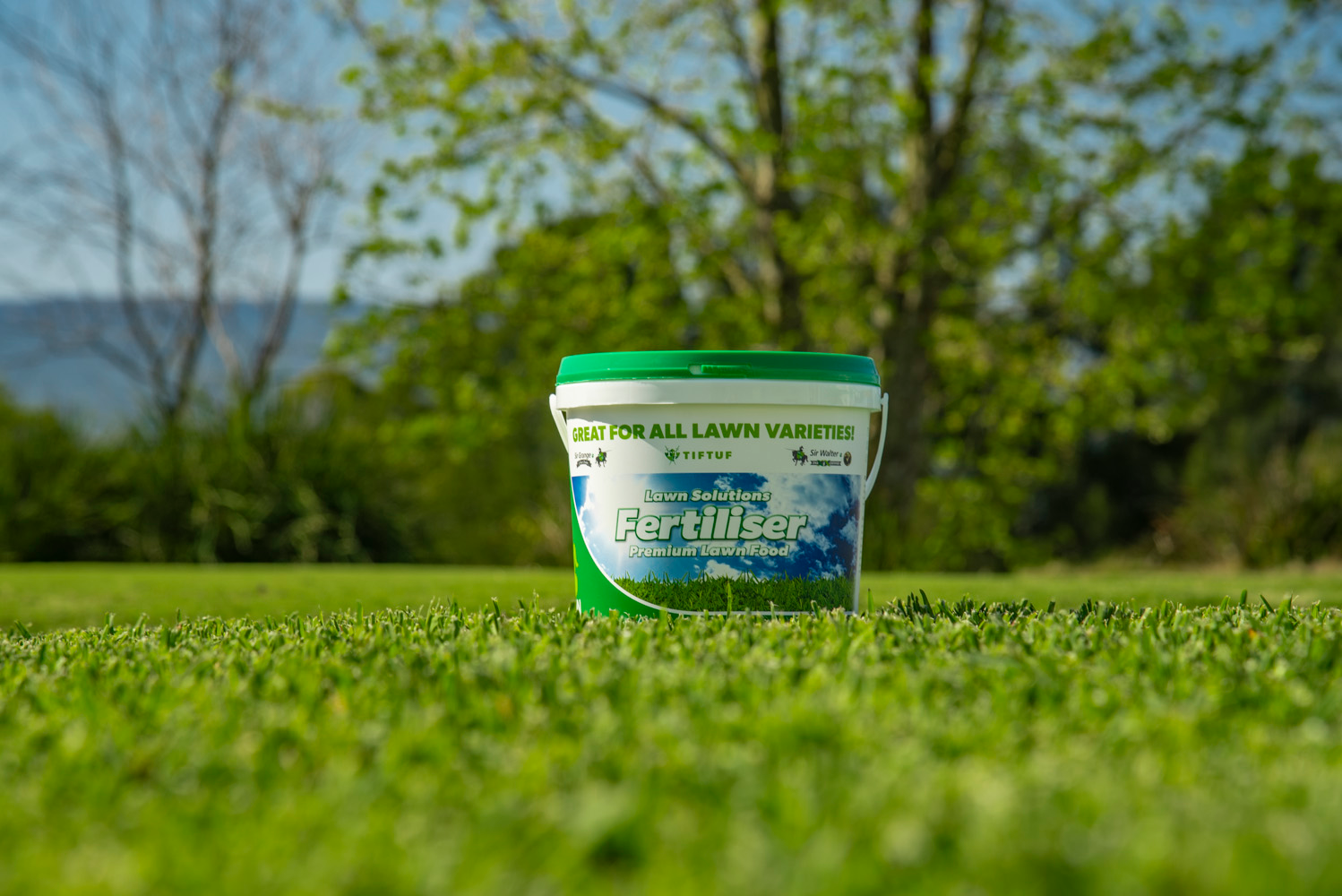
Now it’s time to enjoy your beautiful instant lawn. If you have any questions regarding the ongoing care of your turf, reach out to our friendly staff! They’d be happy to help!

How to Lay Turf FAQs
What do you put down before laying turf?
Apply a lawn starter fertiliser like Lawn Launcher starter fertiliser, which contains fast and slow release fertiliser and water crystals.
Does turf need to be rolled?
Rolling your new turf will help improve the contact between the turf and soil surface by removing air pockets and helping with levelling.
Do you put sand or soil under turf?
We recommend a sand, soil, and organic blend for the best results. This is generally a mix of the following:
- Washed river sand, medium to coarse particles
- Some heavier soil is generally added to help hold the moisture and is mixed with the sand to create a free-flowing profile for water movement.
- A composted material is then added, generally chicken or animal manure or natural nutrients to help balance pH levels.
How do you prepare soil for turf?
Test the pH of your soil using a pH testing kit. This will help guide you with what treatments your soil may require before installing your new grass turf, along with importing fresh under-turf soil.
How long does new turf take to root?
Depending on the turf varieties, this could be as little as 7 days! TifTuf Hybrid Bermuda couch grass will establish the turf area quickly during the spring & summer months.
How much soil do I need under new turf?
50mm to 200mm + depending on your situation. We say a good growing medium is 100mm plus.
Can you lay turf in winter?
Yes, you can, laying turf through winter is great because you don’t have water your lawn laid turf anywhere near as much as what you would during spring and summer. The only downfall with installing during winter is the turf varieties are in dormancy. The establishment period will be longer.
Is it better to lay turf or seed?
It is best to lay turf, here’s some cons to using seed:
- A lot of waiting for the seed to establish and become a lush green lawn. The time frame can be 8 weeks up to a year.
- Potential uneven germination. This can result in a patchy lawn.
- Weather can negatively impact germinating seeds. Your worst enemies are heat, high winds and high rainfall.
- You’ll use a lot of water so that your seed’s don’t dry out as they germinate.
How do I prepare the ground when laying on clay?
If you have a clay base, we’d recommend applying a clay breaker product like Gypsum to help de-compact the heavy clay soil and add a sandy soil under-turf.
Can you just lay turf over grass?
We wouldn’t recommend it, spray out any existing grass types and weeds with Glyphosate. Please ensure to follow the labeled rates to allow for a total kill. Allow a minimum of two days for the chemical to work on the plant. A second application may be required.
What happens if I walk on new turf?
If you walk on your new turf whilst it’s establishing this can cause diverts and lumps within your freshly laid turf. Try not to walk on your new lawn for two to three weeks, this allows the root system to firmly knit with the underlay and ensure that the turf will remain smooth.
When can I mow my newly laid grass?
Giving your lawn its first mow can be done once you can no longer lift up any of the turf slabs. Depending on the turf type you have, this could be as little as 7 days! TifTuf Hybrid Bermuda will establish fast during the spring & summer months. When giving your lawn its first mow complete this on a slightly higher setting than normal and slowly bring it down to your preferred height.
How long after laying turf can you feed it?
Apply Lawn Solutions Fertiliser in 6-8 weeks time to finish off the lawn establishment phase.
I have a dog. Will my turf survive?
The key is picking the perfect turf type to handle the wear and tear and your environment. Reach out to our expert staff for advice on which turf variety will suit you.
WOULD YOU LIKE MORE INFORMATION?
Contact us for expert advice, or come & say hi at our office in Tamborine!


